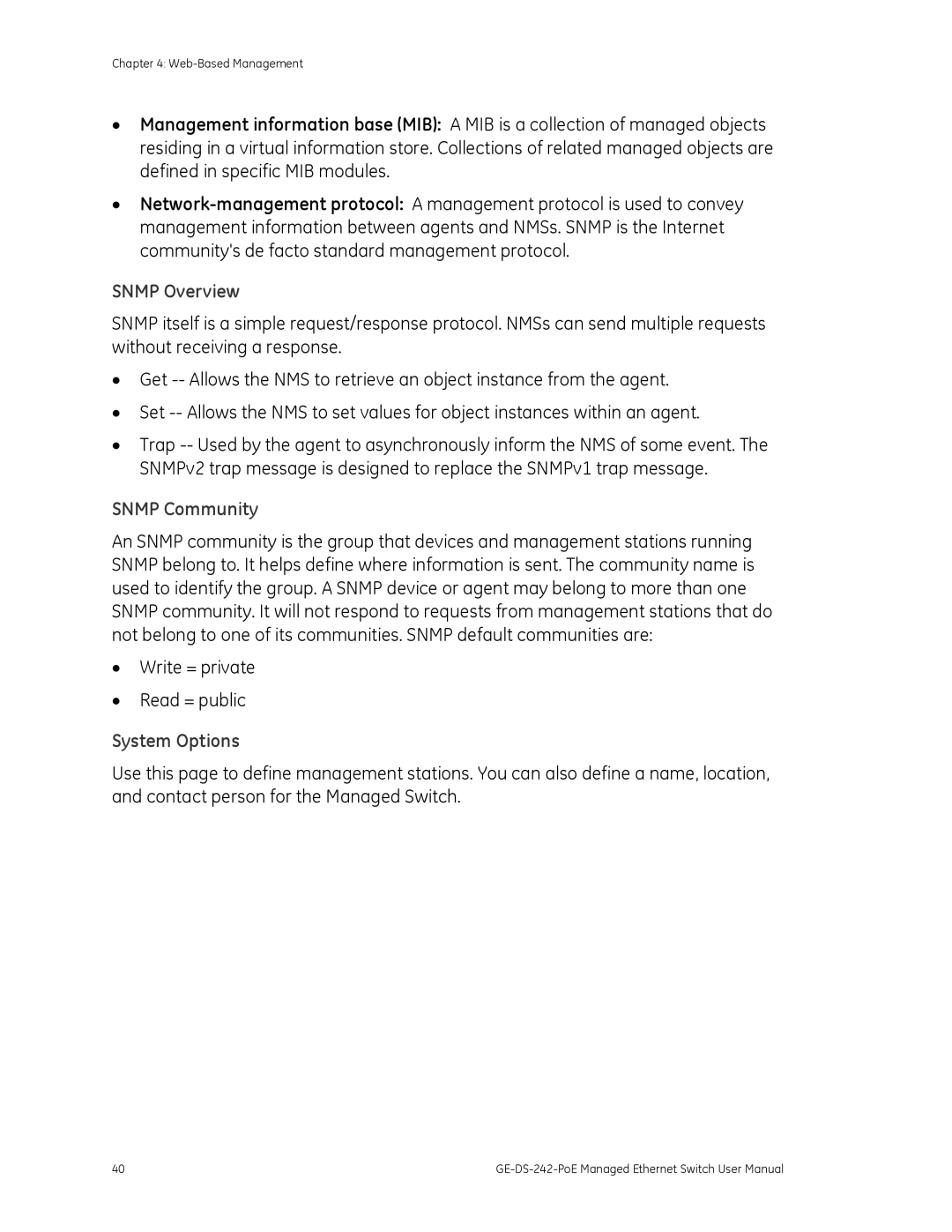GE-DS-242-POE specifications
The Graco GE-DS-242-POE is an advanced electric diaphragm pump designed to cater to a wide range of industrial applications. This model stands out for its reliability, efficiency, and innovative technology, making it an ideal choice for demanding environments such as automotive, food processing, and chemical handling.One of the main features of the GE-DS-242-POE is its robust construction. Built from durable materials, it is designed to withstand harsh operating conditions, ensuring a long service life. The pump is powered by a reliable electric motor that guarantees consistent performance with minimal downtime. This electric design offers a significant advantage over air-operated pumps, as it eliminates the need for compressed air, reducing operational costs.
The GE-DS-242-POE utilizes a double-diaphragm design that allows for precise fluid transfer and improved efficiency. This technology enables the pump to handle a variety of fluids, including viscous materials, slurries, and abrasive substances, without compromising performance. The dual diaphragm feature also enhances the pump's ability to handle fluctuating pressures, making it suitable for diverse applications.
Another key characteristic of this model is its versatile port configuration. The pump is available with various inlet and outlet sizes, allowing for easy integration into existing systems. This adaptability also means that the GE-DS-242-POE can be used in both temporary and permanent installations, further extending its utility.
Ease of maintenance is a crucial aspect of the GE-DS-242-POE. The design incorporates accessible service points, which simplify routine inspections and repairs. This user-friendly approach reduces maintenance time and costs, ultimately boosting productivity.
Additionally, the GE-DS-242-POE is equipped with advanced safety features. These include pressure relief valves and electronic controls that help prevent overpressurization, ensuring safe operation under all conditions. The pump also meets various industry standards, reinforcing its reliability and suitability for compliance with safety regulations.
In conclusion, the Graco GE-DS-242-POE is a technologically advanced electric diaphragm pump that excels in performance, durability, and versatility. Its robust construction, efficient double-diaphragm technology, and user-friendly design make it an indispensable tool for businesses in various sectors, enhancing operational efficiency while ensuring safety and reliability in fluid handling processes.
